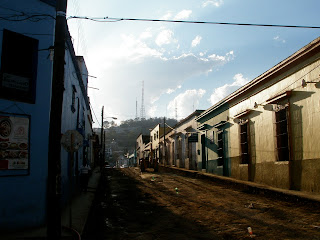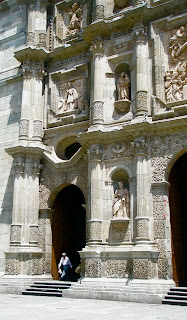Warm/Cool
 |
| Oaxaca A.M. |
Here's an exercise for applying the info we began exploring regarding warm/cool.
Limit your palette to just 2 colors, one distinctly warm (yellow, ochre, gold, rich green gold, cadmium red light, pyrol orange, quin burnt orange...), the other very cool (any blue, violet, perylene green, hunter green, pthalo green...).
Make a version of a picture in which for every shape you decide how warm or cool it should be. The pure form of your warm color would be reserved for the very warmest part of the scene, and the purest form of the cool would only be used for the coolest part. Everything else would involve mixtures of the warm and cool colors. The second warmest shape, for example, would have a little bit of the cool mixed in. got it?
 |
| Sole |
How you choose to make something warm or cool is a big category. At first it may seem arbitrary, but the more practice you have paying attention to it, the more your choices will be informed by patterns you've observed. To get started, look at the image you've chosen, to see if there is any content that you automatically think of as either cool or warm. The sky, for example, should be pretty obvious, as would the ocean, or a bare light bulb or fire. You might ask, "What would be the warmest (or coolest) part of this scene"? Then you have something to compare everything else to. If you decided, for example, that a brick wall in sunlight was going to be very warm, then the shadow on the wall would be somewhat cooler. The shadow on a clump of foliage would be even cooler, since the foliage in sunlight is cooler than the brick in sunlight. It's all relative, just like value. When you are deciding where on the temperature scale to place a particular subject, try looking for something a little cooler and something a little warmer than the part you are about to paint. Just as with value, when you notice that this new part should be lighter than THAT, but darker than THIS. So, too, with temperature, it helps to locate your new bit between two parts you're already committed to.
These photos would work for this assignment, but it’s always good to use one of your own, or work from life.
Please post your discoveries by leaving a comment.
Have fun
Tom










